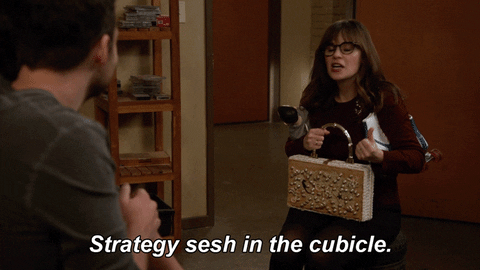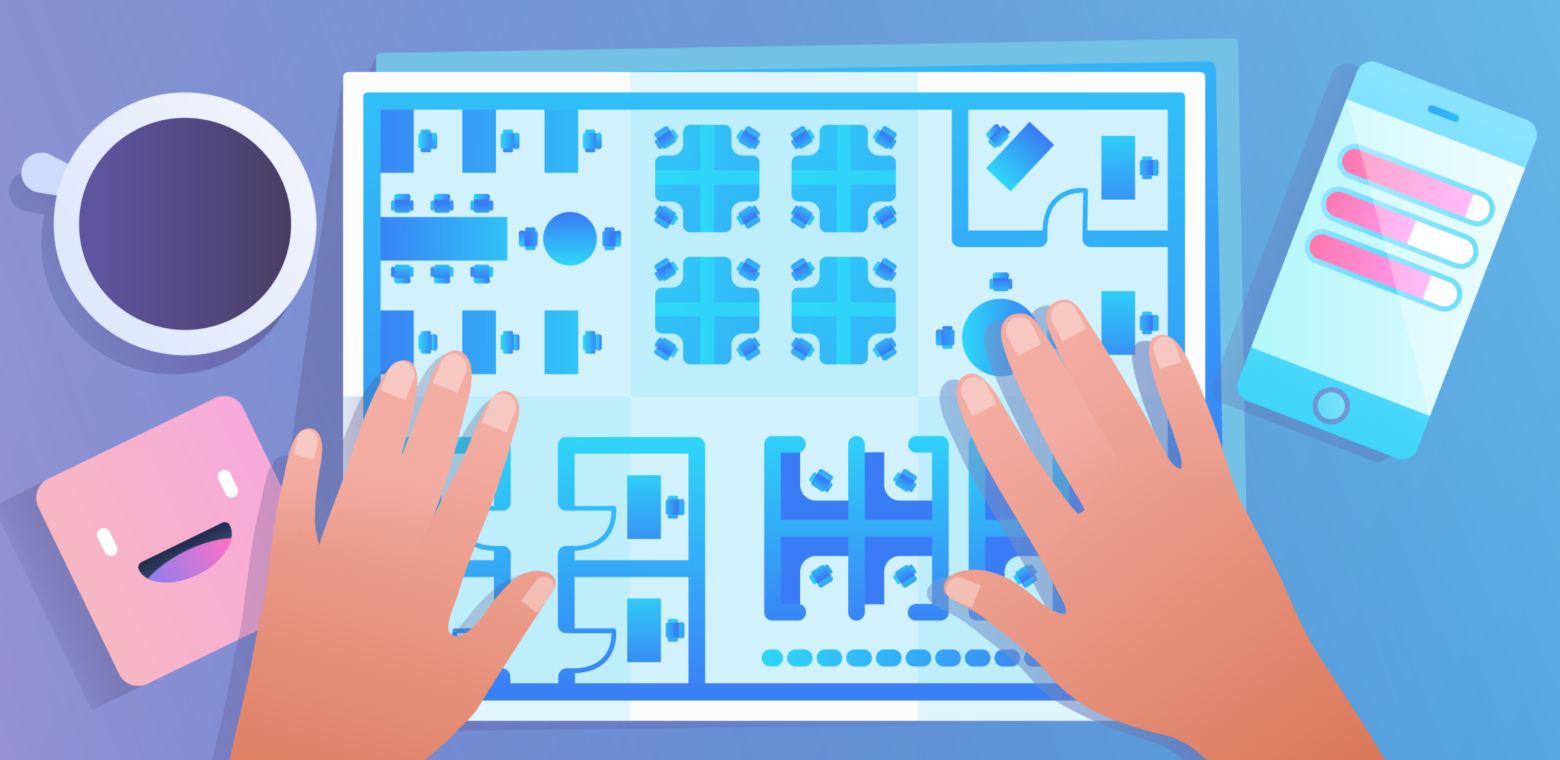There has long been a heated debate as to which type of workplace layout is the best for productivity: Cubicles? Open office? Anywhere in the world?
The general opinion leans in favor of the privacy of a closed office. But others advocate the bustling spirit of an open-office space. As a person who’s done her fair share of working in all types of environments, I set out to get to the bottom of this never-ending saga.
In reality—there isn’t that much of a difference between a closed or open office when it comes to productivity.
Using the DeskTime time-tracking and productivity app, I examined people working in three different environments: an open office, a closed-space office, and a cubicle. It turns out that working in a closed office leads to just 4% more productivity than working in an open office (89.3% vs. 85.8%).
But here’s the kicker: the most productive setup (91.1%) of the trio was the bane of every modern worker’s existence—the dreaded cubicle.
So why are businesses spending hundreds of thousands of dollars building up or tearing down office walls if they don’t bear the desired fruit of productivity? And if we want to be our most productive selves, is the cubicle scene from the Matrix our future?

Before jumping to any conclusions, let’s take a closer look at our options.
Open Office Layouts
Open-plan offices have been around since 1906 and seem to be everywhere. Nearly 75% of all offices in the US are designed with an open-space plan, such as the ones you’ll find at high-tech companies like Microsoft, Etsy, and others among them.
The thinking is that an open office creates a more collaborative, social, and energetic environment. It’s more cost-friendly since you can squeeze more people per square footage of the area. And there’s no need for extra furniture and walls, since workstations can be placed against each other.
However, the openness of this type of office does come with its challenges:
- Excessive noise that employees have to deal with on a daily basis.
- A lack of privacy, especially when you have a phone call.
- It’s a playground for germs and disease since people are twice as likely to get sick in an open office.
Closed Offices And Cubicles
On the other hand, we have the closed office where employees have their own individual workspace or an enclosed area for a department.

This type of office layout is perfect for activities that demand concentration. It can also be personalized in a way that the employees find comfortable and reflecting of their ethics. The closed office layout reinforces hierarchical order and makes it clear—the better the office, the higher up the ladder you’ve come, which can also work as a motivational incentive to perform better.
Sure, there are disadvantages to this layout, too. For example:
- The closed office is more difficult to supervise.
- It’s not the best option if you want to collaborate and brainstorm with the rest of the team.
- It’s expensive to maintain, and often requires more artificial cooling, heating, and lighting.
The cubicle lies somewhere in the middle of the two. While it’s partially enclosed, providing some degree of privacy, you still won’t be able to shut the door in the face of an annoying colleague. And the company will still end up needing more square footage than if using desks alone. Furthermore, a 2013 study found that cubicle workers had the highest rates of unhappiness with their work setup.
There are pros and cons to all three office layouts. But the productivity levels among them vary by only 6 percent. So is it really fair to say that one layout is that much more productive than the others?
The Solution: Looking Beyond The Layout
In truth, there is so much more to overall employee happiness and productivity than just office layout.
Sure, some elements are recommended and can even be traced back to our evolutionary heritage. For example, we like to sit with our backs to the wall to minimize potential threat and avoid someone sneaking up on us. Or we enjoy a view of the outdoors and direct sunlight entering the office because, as former hunter-gatherers, we are happiest when being outdoors.
But instead of just thinking about layout, it’s more important to get creative with the design and ambience of the workplace.
Here’s how to make your office more productive without spending thousands of dollars to change the layout:
- Introduce artwork. Art will inspire and motivate employees, adding personality to the space. Or better yet, let employees do the decor. Research has found that employees who have control over the design of their workspace are up to 32% more productive.
- Bring in the greens. Plants have the same effect on people as natural light, they reduce stress and are said to have a filtering effect in the air.
- If one size doesn’t fit all, create an office that has both open and closed spaces. Have individual closed rooms where people can concentrate on deep work, as well as open areas suited for discussion and idea generation. You’ll have the best of both worlds.
- Get quality headphones and have your team listen to their favorite music or even video game soundtracks like Halo or Legend of Zelda. Computer game soundtracks are designed to motivate players, yet manage to stay in the background so they don’t serve as a distraction. They’ll do the same for employees.
- Even blocking social media apps and phone notifications can increase workplace productivity by 14%, improving mood and helping to avoid unnecessary distractions.
It’s not just the space itself. It’s also got to do a lot with the feel of the space, or its place identity. No matter the definition, a company’s success is directly related to employee satisfaction and the way we perceive our workplace.
And instead of arguing which layout is the best for productivity, we should also remember—it’s how we make the most of our space that counts.
Next: The Simple Reason Why It’s Time To Ban Laptops In Meetings










































